Digital Camera World Verdict
Celestron Inspire 100AZ telescope makes astrophotography easy. This 4 inch/100mm refractor telescope has a clever lens cap that doubles as a smartphone clamp with which it's possible to photograph and even video the Moon, planets and deep-sky objects in space using just a smartphone. Here's why this beginner’s telescope also makes a good entry-level instrument for first steps in astrophotography.
Pros
- +
Easy set-up
- +
Smartphone clamp for photos and video
- +
Excellent
- +
Red light illumination
- +
Lightweight construction
Cons
- -
Some false color views
- -
Lacks precise positioning
- -
Solar filters cannot be attached
- -
Deep sky targets disappoint
Why you can trust Digital Camera World
Since it’s a refractor telescope it uses lenses to focus light into the eyepiece, so everything has to be viewed while standing behind its optical tube. That makes it difficult to look at objects at the zenith, so Celestron has supplied a 90º image diagonal with the Inspire 100AZ so that users can stand over the 1.25-inch eyepiece holder rather than kneel under it. A couple of eyepieces are supplied in the box – a 0.8-inch/20 mm (offering 33x magnification) and 0.4-inch/10 mm (for 66x magnification) – and there’s a decent quality StarPointer Pro finderscope to help locate targets.
The main reason to buy this telescope over others is for its unique lens cap-smartphone mount. It's a simple, clever design that sees the lens cap fitted with elastic straps and to secure a smartphone in position so that its camera is over a small hole. You then simply place an eyepiece in a slot on the back of the lens cap and, hey presto, you have a photographic device to insert into the telescope’s eyepiece holder.
Specifications
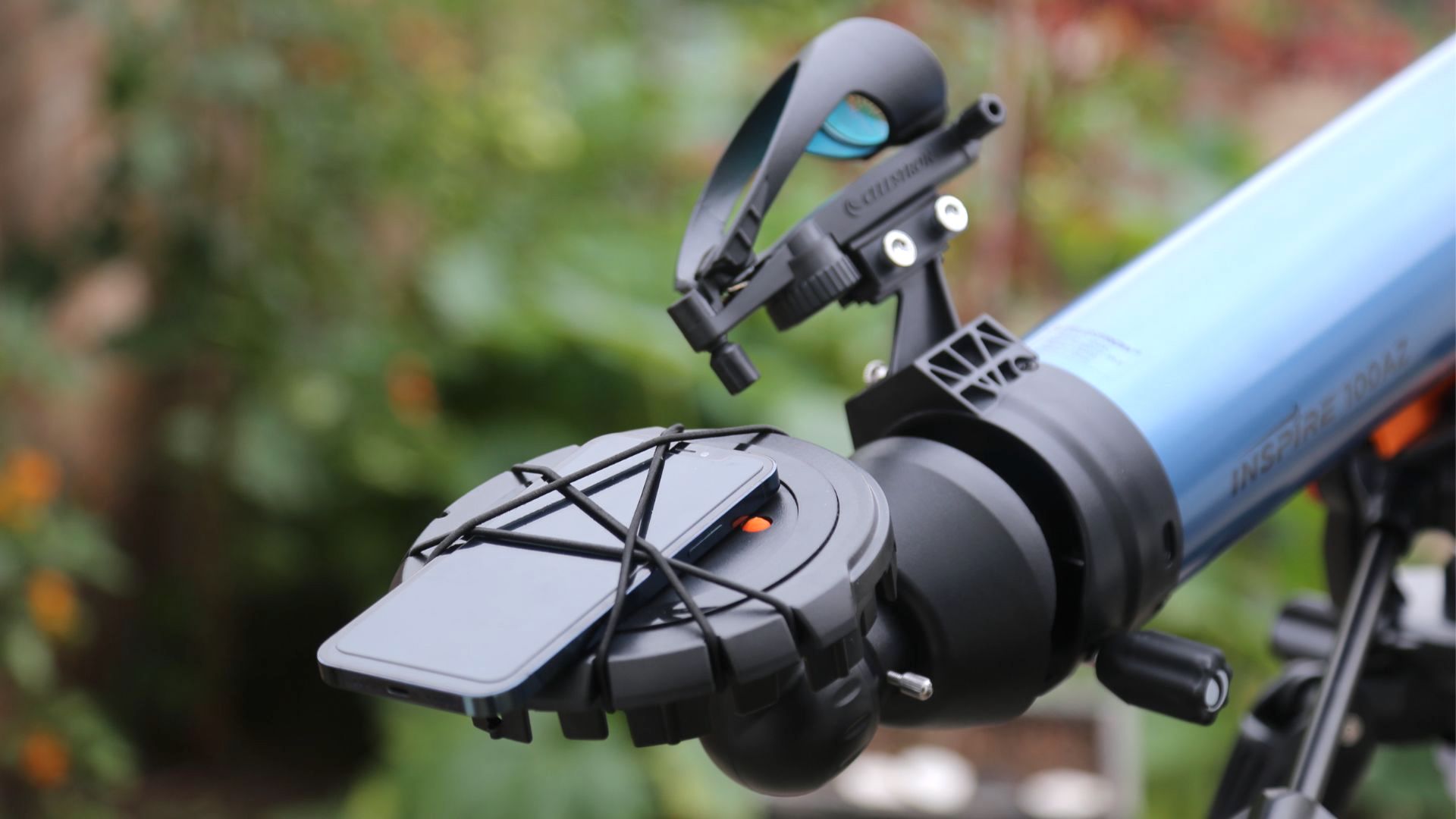
Optical design: Refractor
Aperture: 3.94-inch/100 mm
Focal length: 25.98-inch/660 mm
Focal ratio: f/6.5
Eyepiece focal length: 0.8-inch/20 mm (33x) and 0.4-inch/10 mm (66x)
Total kit weight: 20 lbs./9.07 kg
Mount type: Alt-azimuth
Celestron Inspire 100AZ: performance
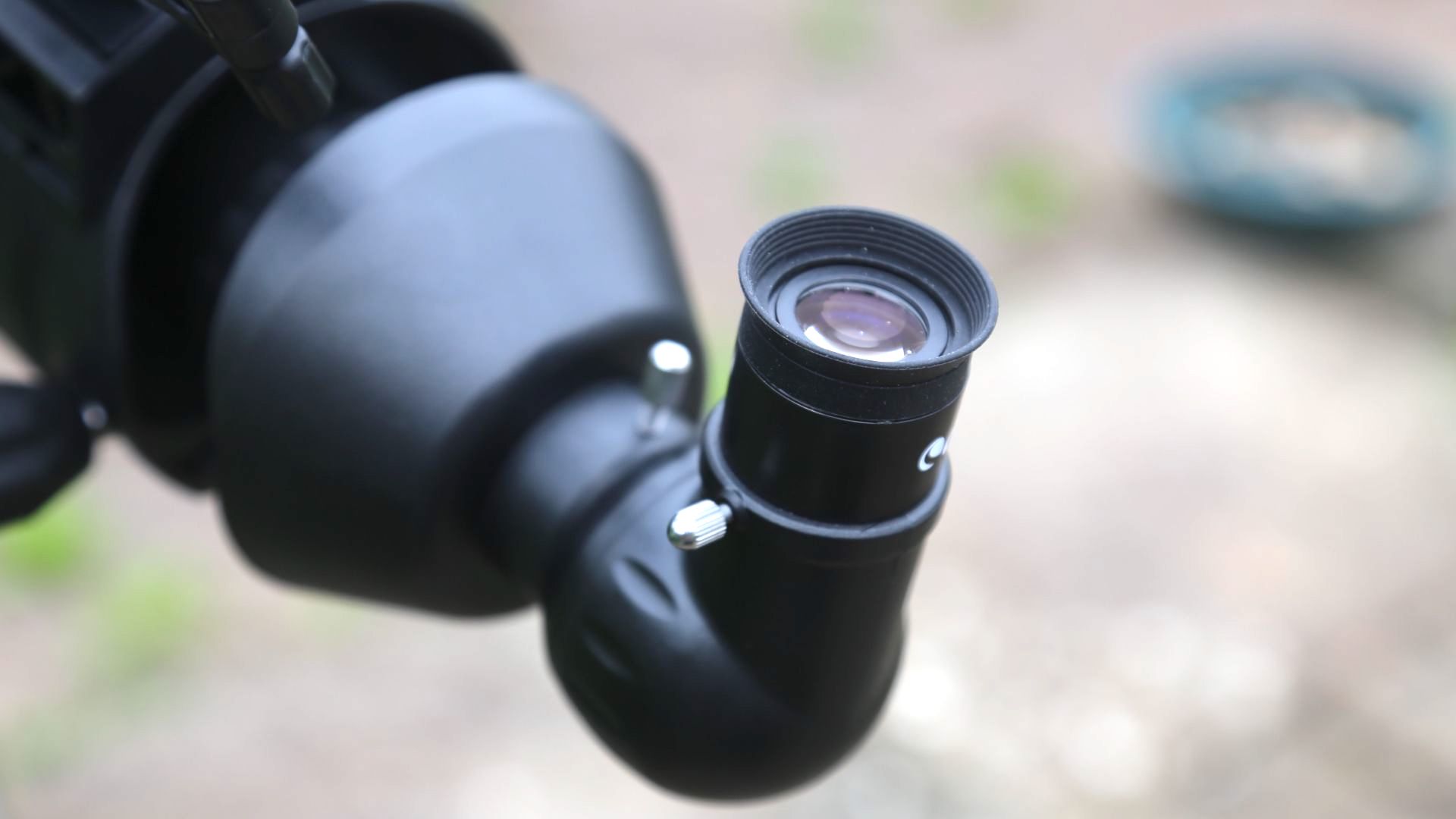
The Inspire 100AZ is manipulated using a simple altazimuth mount, as are almost all beginner’s telescopes. What this telescope has, that many of its ilk lack, is a protruding hand control, which can be used to move the Inspire 100AZ left and right in small movements. However, in practice, the pan bearings are rather tight, which makes precisely positioning this telescope difficult. In effect, it means that there is a slight recoil when it's locked in place. Thankfully, the tilt bearings are both looser and simpler to lock accurately in place. The trick is to get the Inspire 100AZ roughly underneath or above your target using the pan axis and then tweak the tilt axis to get it into the field of view.
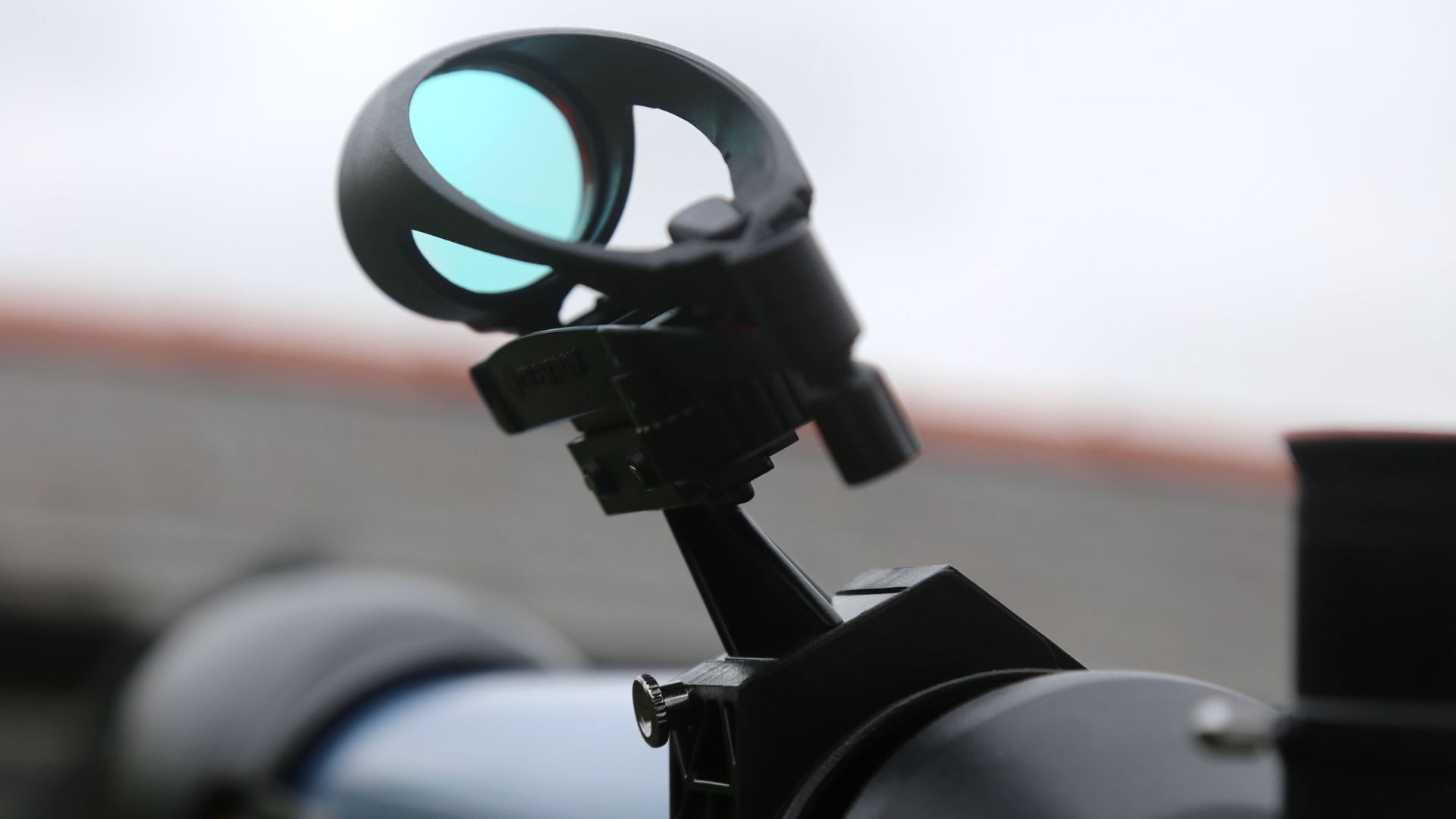
We got some lovely clear and bright views of the gas giant planets, Saturn and Jupiter, through the 20 mm eyepiece, and without much in the way of chromatic aberration (a purple line around bright objects), which is common at this price point. Although it doesn't excel with deep sky objects, we were able to get some good views of the Perseus double cluster and the Andromeda galaxy, with stars sharp through about 75% of the field of view.

The lens cap-smartphone mount proved very easy to use, though precisely positioning the telescope so that your target is in the telescope’s field of view requires the 20 mm eyepiece. You then have to remove it from the telescope’s eyepiece holder and immediately attach it to the lens cap before Earth’s rotation makes your target drift out of the telescope’s field of view. That’s where the supplied red light torch comes in handy, which can be removed and used in the hand or placed in the tripod’s collar pointing downwards to illuminate a small accessory tray below.
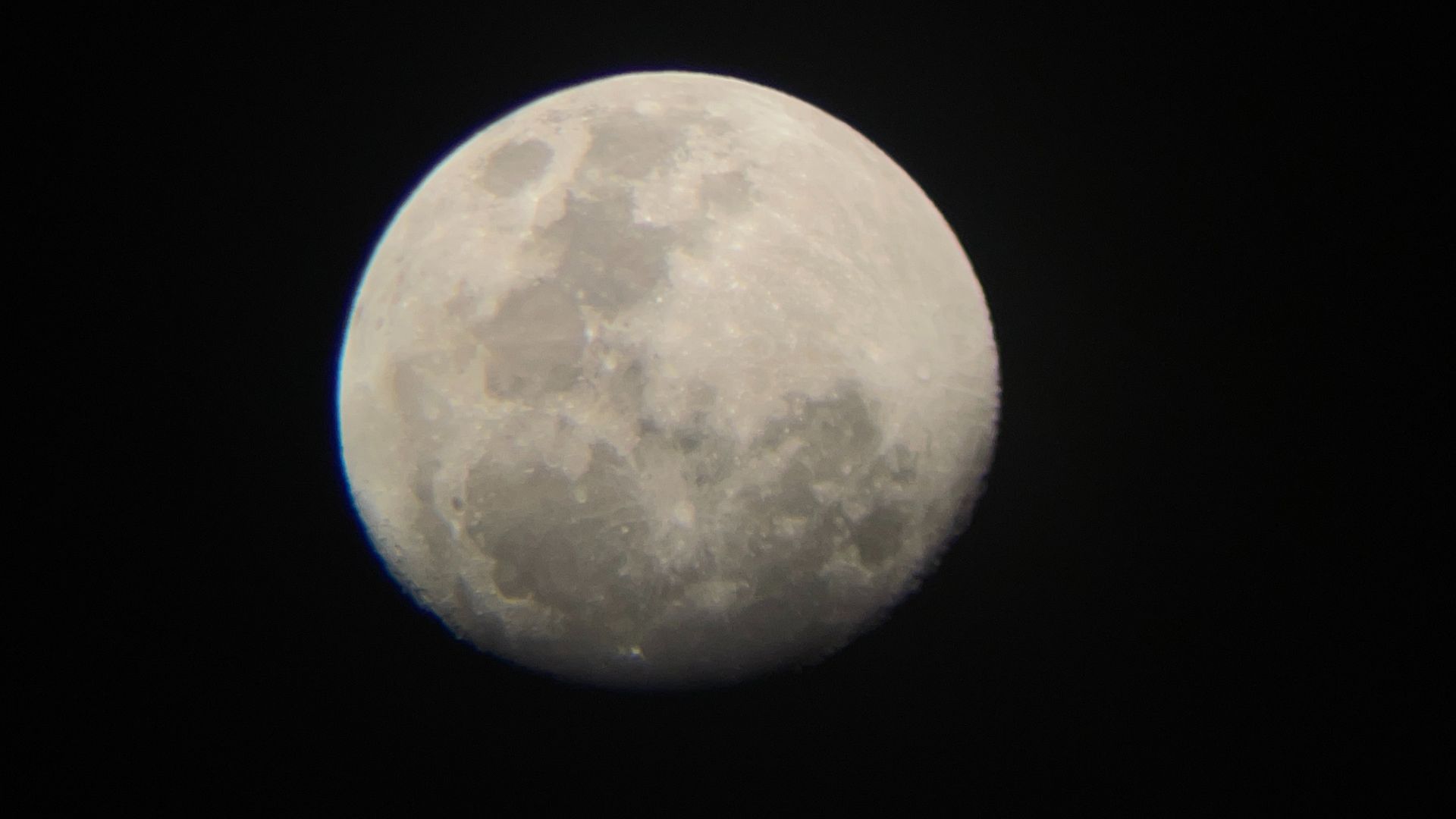
However, once it’s in position it’s possible not only to take single frame photos, but to image stack by taking a short video of, say, a planet then exporting the individual frames to image-stacking software like Registax. That’s ‘proper’ deep-sky astrophotography.
At the end of the Inspire 100AZ’s tube is a slight peak to help keep ambient light out of the optics. Sadly that makes it impossible to attach a solar filter, so the Inspire 100AZ is not a good choice for occasionally observing the sun or a solar eclipse.
Celestron Inspire 100AZ: verdict
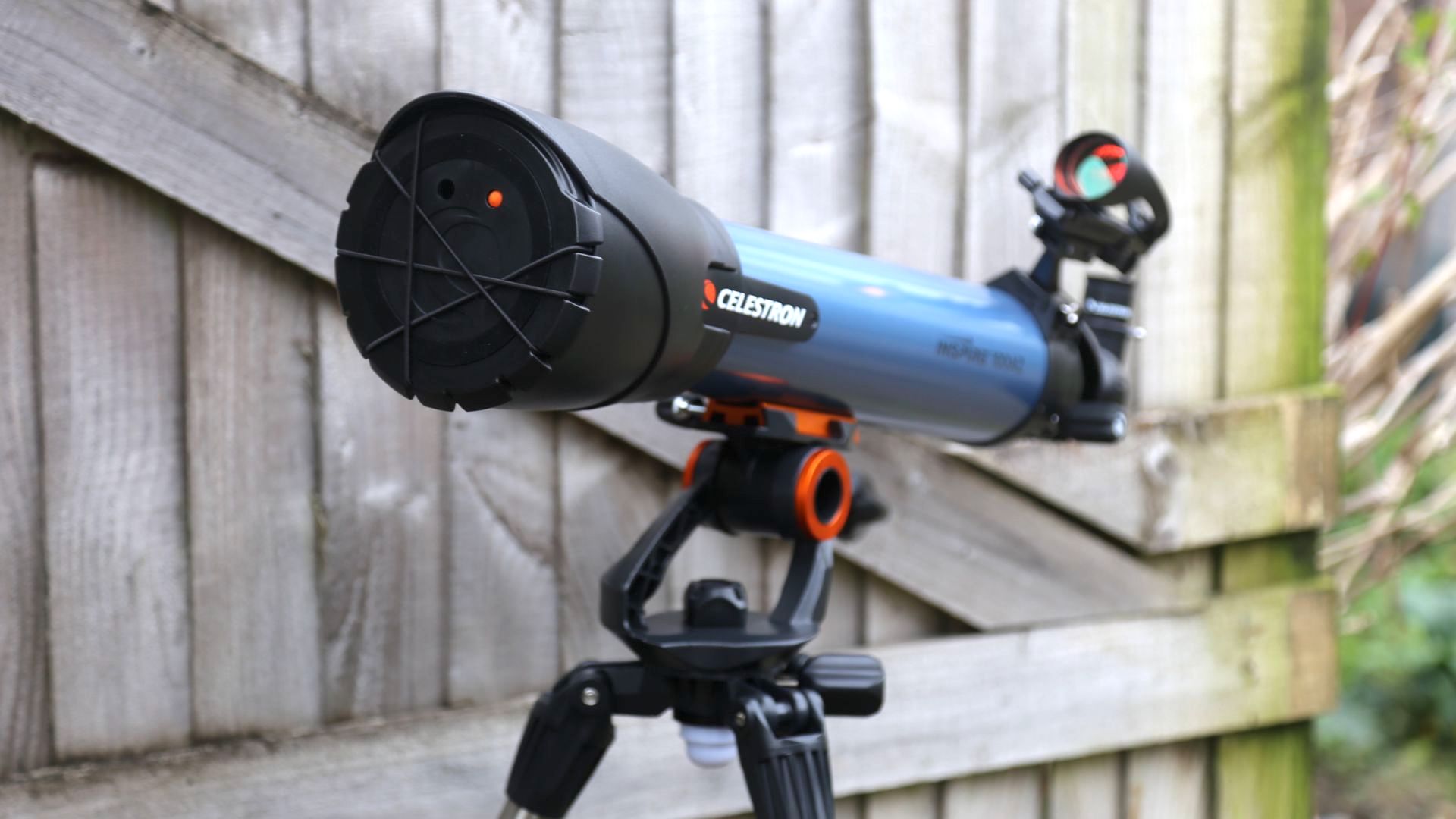
The reason to buy this telescope over others is for its novel smartphone clamp built into the lens cap. It's an impressive piece of design and relatively easy to use, though it does help enormously if you have a spare 20 mm eyepiece to leave in place. With good, sharp views of the Moon and planets, and worthy observations of deep sky objects, the Inspire 100AZ makes for an interesting first step into the world of astronomical observing and astrophotography. Just be prepared to spend a bit of time getting to know its less-than-perfect bearings.
Read more:
• Astrophotography: How-to guides, tips and videos
• Astrophotography tools: the best camera, lenses and gear
• The best lenses for astrophotography
• The best star tracker camera mounts
• Best equatorial mounts
• Best deep-space telescopes
• The best light pollution filters
• The best CCD cameras for astrophotography
• The best spotting scopes
• The best binoculars
• The best microscopes

Jamie has been writing about photography, astronomy, astro-tourism and astrophotography for over 15 years, producing content for Forbes, Space.com, Live Science, Techradar, T3, BBC Wildlife, Science Focus, Sky & Telescope, BBC Sky At Night, South China Morning Post, The Guardian, The Telegraph and Travel+Leisure.
As the editor for When Is The Next Eclipse, he has a wealth of experience, expertise and enthusiasm for astrophotography, from capturing the moon and meteor showers to solar and lunar eclipses.
He also brings a great deal of knowledge on action cameras, 360 cameras, AI cameras, camera backpacks, telescopes, gimbals, tripods and all manner of photography equipment.

